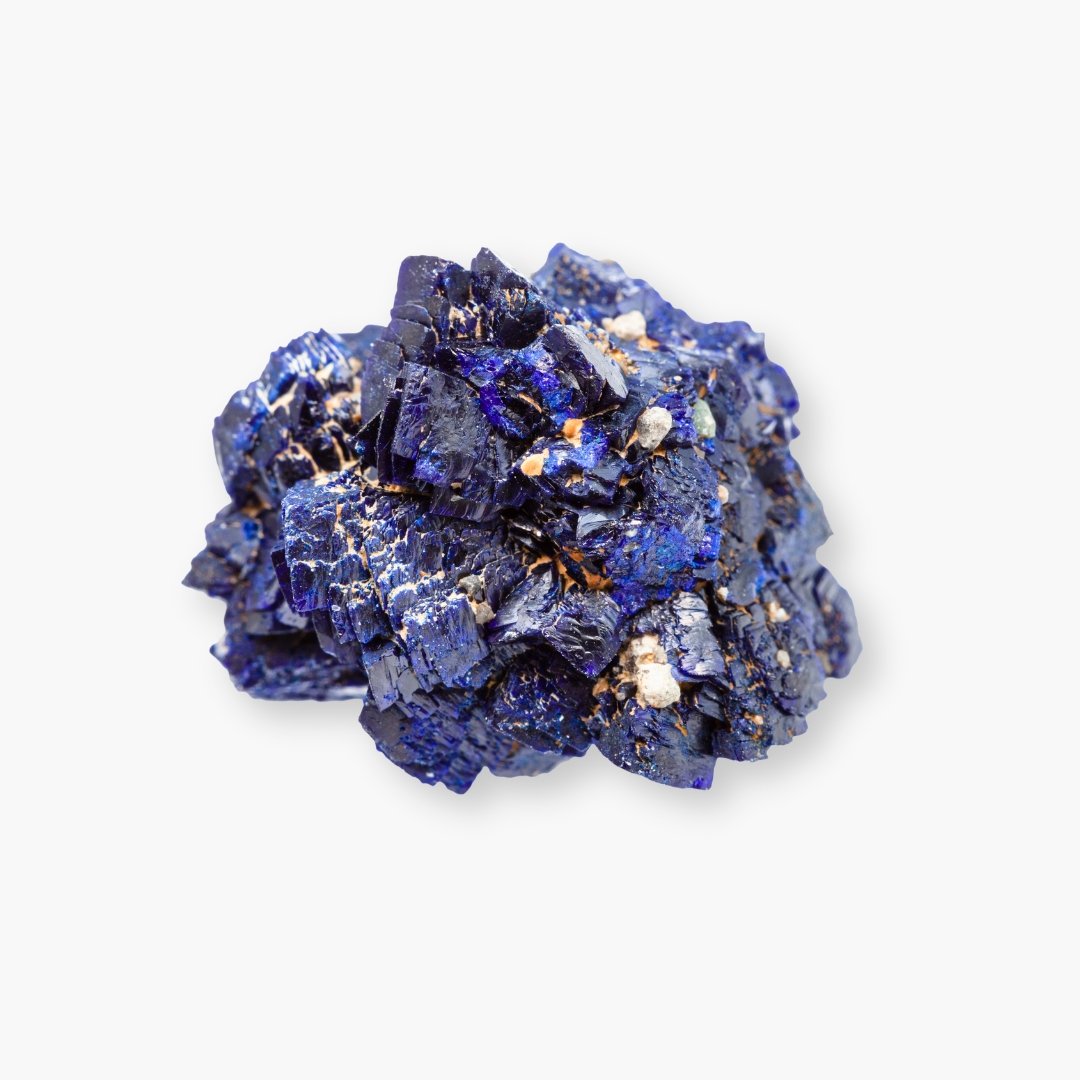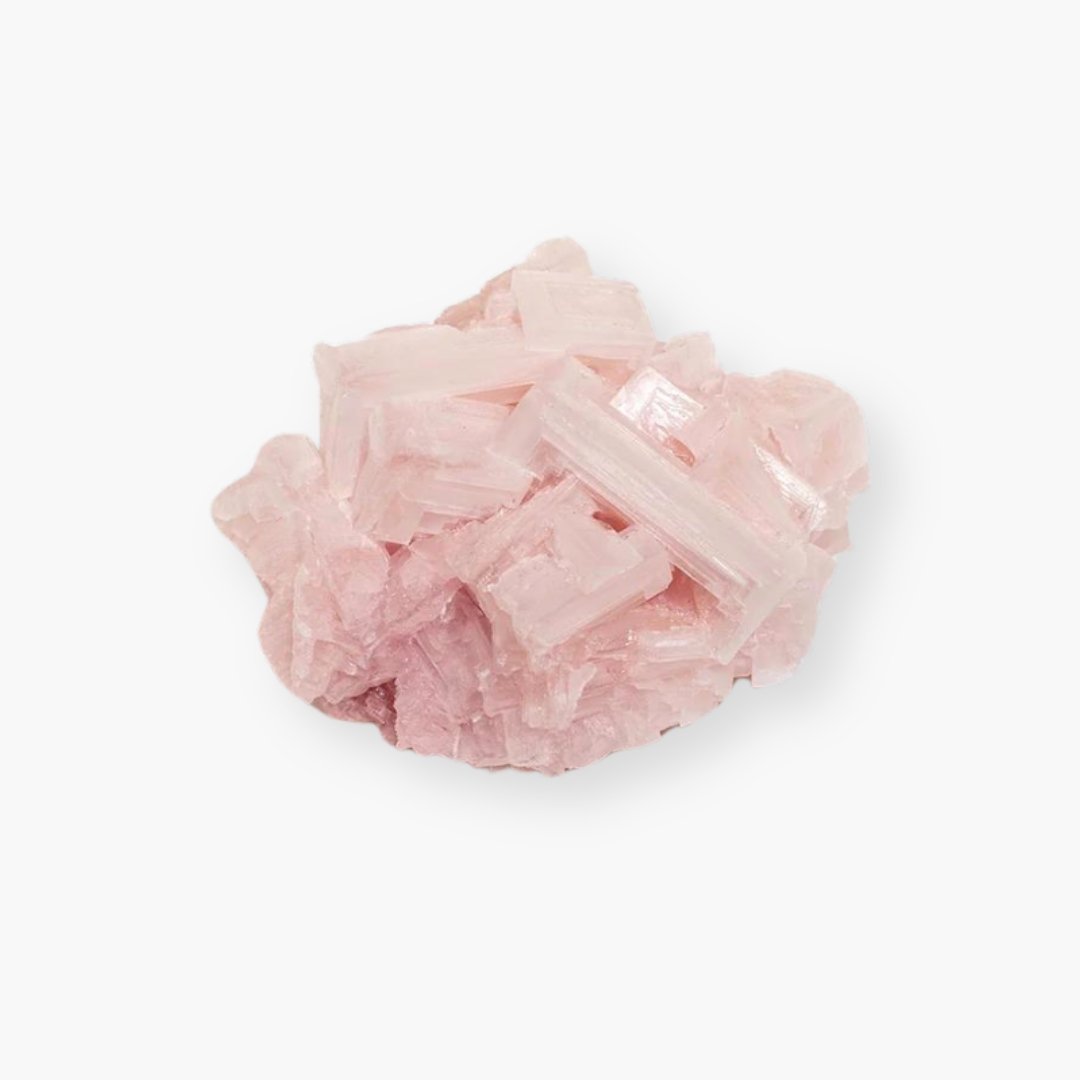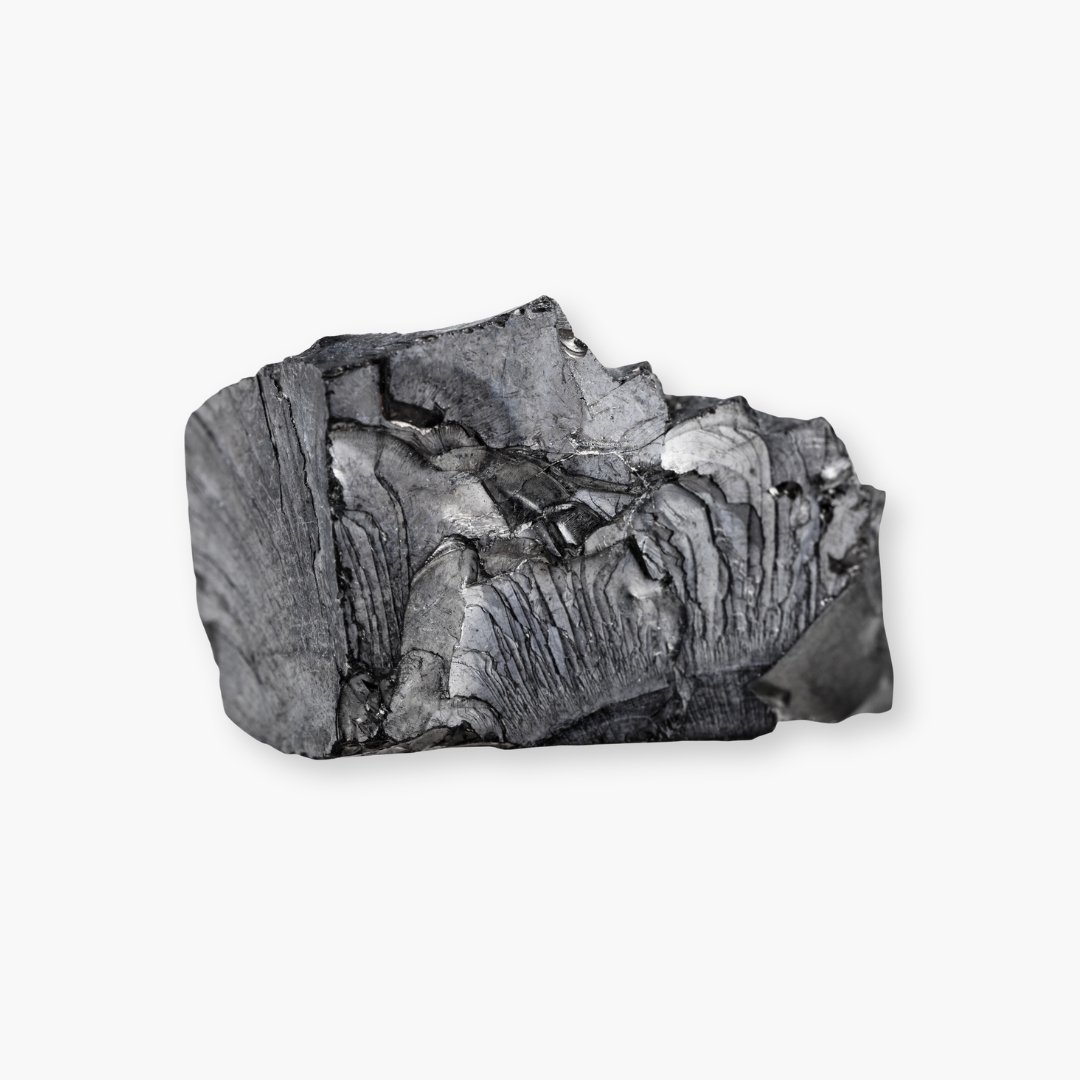Toxic Crystals: Not All Crystals Are Safe to use
Crystals are beautiful, fascinating, and energetically inspiring, but not all are safe for every type of use. One area of concern is ingestion – whether through direct contact in water bottles or in crystal elixirs. While the idea of crystal-infused water is tempting, some crystals can pose risks due to toxic elements, porous structures, or chemical treatments. Let’s explore the ways crystals can be harmful and how you can use them safely.
Ways that Crystals Can Be Toxic When Ingested
Using crystals in direct contact with water for drinking can introduce several risks. Here’s how:
Residues from Polishing: Polishing compounds like chromium oxide (Cr₂O₃) are often used to give crystals a smooth finish. Although these compounds are considered low in toxicity due to their poor solubility, they can leave residues on the crystal surface. Without proper cleaning, these residues could enter water and be ingested.
Chemical Treatments: Crystals are often enhanced for aesthetic purposes through dyeing, bleaching, or soaking in chemicals like acetone. These treatments can leave harmful residues behind.
Dye Treatments: Common in quartz varieties, dyes can leach into water and may contain toxic chemicals.
Bleaching: Used to lighten materials like pearls or certain quartzes, bleaching leaves behind residues that can contaminate water.
Acetone Soaking: Applied to remove impurities, acetone treatments can leave chemical traces if crystals aren’t cleaned thoroughly.
Porous Crystals and Chemical Leaching: Porous materials, like howlite and turquoise, can absorb bacteria, dirt, or chemicals. These contaminants may leach into water, making it unsafe for ingestion. Additionally, some minerals contain toxic elements like copper or lead that can dissolve into water.
Fractures and Bacteria: Crystals with surface-reaching fractures can trap bacteria, dirt, or residues from treatments. These contaminants can seep into water, posing additional health risks.
Water Solubility and Durability: Some crystals, particularly those with a Mohs hardness below 5, dissolve or degrade in water. Others are brittle and prone to breaking, which can result in small fragments entering the water.
Why Safety Matters
The purpose of crystal healing is to enhance well-being, not compromise it. Unsafe practices, such as using treated or toxic stones in water, can lead to serious health issues. The good news? There’s no need to ingest water that has come into direct contact with crystals to benefit from their energy. Using the indirect method – placing the crystal near a sealed water container – offers a safe and effective alternative.
Understanding Toxicity in Context
The amount of toxic elements leached into water from crystals can depend on a few things like the water’s pH level, hardness or softness, and temperature. For example:
Acidic Water: Crystals are more likely to leach toxic elements in acidic conditions, as the increased acidity can break down the crystal structure more readily. This is especially relevant for materials like copper-containing crystals (e.g., malachite) or arsenic-based minerals (e.g., orpiment).
Soft Water: Water with low mineral content (soft water) tends to increase the leaching of certain metals, such as lead and copper. The absence of competing ions allows more harmful substances to dissolve into the water.
Hard Water: High mineral content in hard water can reduce leaching by forming a protective layer on the crystal’s surface (from minerals like calcium and magnesium). However, this doesn’t eliminate the risk entirely, especially with prolonged exposure.
Sulphur and Reactive States: Elements like sulphur, which are stable in their natural form (e.g., in pyrite or sulphur crystals), can react under certain conditions. When exposed to moisture or acidic water, sulphur may transform into compounds like sulphuric acid, which can cause irritation or harm.
Environmental factors like these amplify the potential dangers of using crystals directly in drinking water. The amount of toxic elements released will vary depending on the specific conditions and the crystal's state—whether rough, polished, or fractured. Because chemistry is complex and unpredictable, the safest approach is to use the indirect method when making crystal elixirs. This ensures you can enjoy the benefits of your crystals without compromising your safety.
Which Elements pose the most risk?
Understanding the toxic elements commonly found in crystals can help identify which ones pose risks if ingested but it’s also important to
Uranium (U) (Very High Risk):
Uranium-containing crystals, such as autunite and torbernite, can leach uranium into water, releasing both radioactive particles and toxic compounds. Even minimal exposure poses serious health risks, including kidney damage and increased cancer risk. These crystals are unsafe for any water exposure, particularly for children, pregnant women, and pets. These are not common in gemmology or crystal healing but may be for common with collectors.
Arsenic (As) (Very High Risk):
Crystals like orpiment and realgar are highly unstable in moist environments and can release toxic arsenic compounds into water. Even tiny amounts are dangerous, potentially causing organ damage or cancer. These crystals should never be submerged or used in any context involving water.
Lead (Pb) (High Risk)
Crystals containing lead, like galena or cerussite, can release lead into water over time, particularly in acidic or warm conditions. Lead exposure is harmful at any level and can cause neurological damage, particularly in children and pregnant women. These crystals should never come into contact with water or be used near food or drink. Always wash your hands after handling it and don't touch your mouth or eyes after handling.
Mercury (Hg) (High Risk):
Mercury-containing crystals, such as cinnabar, are stable in solid form but can release mercury compounds if exposed to water, especially under acidic or heated conditions. Mercury exposure is highly toxic, particularly for pregnant women and children, affecting the nervous system. Avoid any water exposure with these crystals.
Antimony (Sb) (High Risk):
Crystals like stibnite can release antimony into water, especially in acidic conditions. Antimony exposure can cause nausea, diarrhoea, and long-term organ damage. These crystals should never come into contact with water for any purpose involving consumption or animal use.
Copper (Cu) (Medium Risk):
Copper-containing crystals, such as malachite and azurite, can leach copper into water, especially if the water is acidic or the exposure is prolonged. Copper exposure can lead to nausea, diarrhoea, and in severe cases, liver or kidney damage. To protect yourself and others, keep these crystals out of water, particularly drinking water.
Fluoride (F) (Medium Risk):
Crystals like fluorite can slowly release fluoride into water, especially if exposed for long periods or in acidic conditions. Fluoride can accumulate in the body over time, causing joint pain or bone issues. These crystals should not be used in water for drinking, elixirs, or for pets.
Sulphur (S) (Low Risk):
Sulphur-containing crystals like pyrite and marcasite are less likely to leach harmful compounds under normal conditions, but they can form irritants like sulphuric acid in certain environments. While the risk is lower compared to other minerals, these crystals should still not be placed in water used for drinking.
final thoughts
Crystals are wonderful tools for enhancing energy and well-being, but their use must be responsible. Educating yourself about the potential risks ensures you can enjoy their benefits safely and share accurate information with others. Indirect methods for elixirs are a simple way to avoid unnecessary risks while still harnessing the energy of your favourite crystals.
Appendix: Crystals to avoid with water
Below are some crystals to think about before dropping them in your water. Although, hopefully, by this point you have already decided to use indirect methods! Remember, it’s not always about a toxic element, but things like water solubility, brittleness, dyes or cracks that can harbour bacteria. Always check:
Does the crystal contain a toxic element in it's composition?
Has the crystal been dyed, bleached or contain remants of polishing compounds?
Is the crystal lower than 5 on the Moh's Hardness scale making more prone to being affected by water?
Does the crystal have surface reaching fractures or cracks? Are they filled with dye?
Is the crystal brittle or prone to flaking or chipping? Can small pieces break off in the water?
Agate (Dyed): Often dyed with chemical pigments that can leach into water and be toxic if ingested.
Azurite (Cu₃(CO₃)₂(OH)₂): Contains copper as part of its structure, which can leach into water, causing nausea or organ damage if consumed.
Bumblebee ‘Jasper’ (actually a calcite): Contains arsenic and sulphur, which can leach into water or be absorbed through the skin.
Cinnabar (HgS): A mercury-based mineral that can release toxic vapours or compounds if heated or exposed to acidic water, posing serious health risks.
Crackle Quartz: Cracks caused by heat treatment can trap bacteria, moisture, and dyes, which may leach out and cause contamination.
Fluorite (CaF₂): Contains fluoride, which can leach into water over time, especially in acidic conditions, and lead to joint pain or bone issues if consumed regularly.
Galena (PbS): Contains lead as its primary element, which is highly toxic and leaches into water, causing severe health risks.
Halite (NaCl): Dissolves rapidly in water (it’s salt), releasing high levels of sodium that can be harmful if consumed in large amounts.
Howlite (Ca₂B₅SiO₉(OH)₅): Although chemically safe, howlite is porous and brittle, meaning it can absorb water or other liquids, which may harbour bacteria over time if not cleaned properly. Small piece can break off into your water and can be ingested.
Malachite (Cu₂(CO₃)(OH)₂): Contains copper as part of its primary composition, which can leach into water and cause nausea or liver and kidney damage.
Orpiment (As₂S₃): Contains arsenic as a primary element, which can leach into water and cause severe toxicity.
Pyrite (FeS₂): Can oxidise in water to form sulphuric acid, which may irritate the skin or digestive system if ingested.
Realgar (As₄S₄): Contains arsenic as a main element and degrades in light or moisture, releasing toxic compounds.
Shungite: A carbon-rich mineral often marketed as a water purifier, but low-grade shungite may contain impurities like lead or mercury that leach into water.
Stibnite (Sb₂S₃): Contains antimony, which can leach into water and cause nausea, vomiting, and long-term organ damage if ingested.
Caveats
Details provided about mineral composition are approximations and may vary depending on the exact composition and grade of the stone. Impurities or variations in mineral content could increase or decrease the actual toxic element content and may vary based on its oxidation state. Not unless the stone is destroyed and its composition analysed in a lab using advanced gemmological testing tools, we can never be sure of the exact composition of the material.
References and Further Reading:














